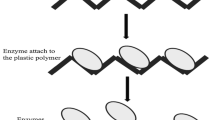Abstract
The marine polychaete worm Nereis virens was used to study the bioaccumulation patterns of metal exposures with pulverised fuel ash (PFA). Juvenile N. virens were exposed for 12 weeks to sediments comprised of 100% PFA, 50% PFA-50% clean sand, a reference sediment (contaminated harbour-dredged material) and a clean sand control. Mortality after the first 4 weeks was high at 32–45% in the four sediments. However, this declined to a few percent during the following 8 weeks. Growth expressed as biomass (wet weight) was reduced in bout PFA treatments and the reference sediment. Heavy metal accumulation in the tissues of N. virens was characterised as follows: a group of elements showed negligible to low accumulation (Cd, Cr, Ni, and Zn), As and Cu wich showed a definite, but moderate accumulation: and finally Se, which showed a low accumulation rate, where an uptake equilibrium was not reached after 9 weeks. It is concluded that acute toxic effects did not occur but a population of N. virens inhabiting a PFA dumping site could be affected by high Se concentrations.
Similar content being viewed by others
References
ANSI/ASTM: 1978, ASTM D 3683-78. In: Annual book of standards Part 26, American Society for Testing Materials, Philadelphia.
Bamber, R. N.: 1980, ‘Properties of Fly Ash as a Marine Sediment’, Mar. Pollut. Bull. 11, 323–326.
Biddinger, G. R. and Gloss, S. P.: 1984, ‘The Importance of Trophic Transfer in the Bioaccumulation of Chemical Contaminants in Aquatic Ecosystems’, Residue Reviews 91, 104–145.
Blake, R. W.: 1979, ‘On the Exploitation of a Natural Population on Nereis virens Sars from the North-East Coast of England’, Estuarine and Coastal Marine Science 8, 141–148.
Brown, J. and Ray, N. J.: 1983, ‘The Handling and Disposal of Coal Ash in the CEGB in Relation to the Aqueous Environment’, Wat. Sci. Techn. 15, 11–24.
Bryan, G. W.: 1976, ‘Some Aspects of Heavy Metal Tolerance in Aquatic Organisms’, in: Effects of Pollutants on Aquatic Organisms, Vol. 2, pp. 7–34. Lockwood, A. P. M. (ed.). Cambridge University Press.
Bryan, G. W. and Hummerstone, L. G.: 1971, ‘Adaptation of the Polychaete Nereis diversicolor to Estuarine Sediments Containing High Concentrations of Heavy Metal. I. General Observations and Adaptation to Copper’, J. Mar. Biol. Ass. U.K. 51, 845–863.
Chambers, M. R. and Milne, H.: 1975, ‘Life-cycle and Production of Nereis diversicolor in the Ythan Estuary, Scotland’, Estuar. and Coast. Mar. Sci. 3, 133–144.
Dvorak, A. J. et al.: 1977, ‘The Environmental Effects of Using Coal for Generating Electricity’. Argonne National Laboratory; U.S. Nuclear Regulatory Commission (NUREG 0252), 221 pp.
Gillespie, R. B. and Bauman, P. C.: 1986, ‘Effects of High Tissue Concentrations of Selenium on Reproduction by Bluegills’, Trans. Ass. Fish Soc. 115, 208–213.
Gillet, P.: 1987, ‘Bioaccumulation du cuivre et du zinc chez Nereis diversicolor (Annélide Polychète) de l'estuaire du Bou Regred (Maroc)’, Cah. Biol. Mar. 28, 339–350.
Jenner, H. A. and Bowmer, T.: 1990, ‘The Accumulation of Metals and Toxicity in the Marine Intertidal Invertebrates Cerastoderma edule, Macoma balthica, Arenicola marina Exposed to Pulverised Fuel Ash in Mesocosms’, Environ. Pollut. 66, 139–156.
Marquenie, J. M., Crawley, D. K., deJong, P. and Jenner, H. A.: 1988, ‘Growth and Metal Uptake of the Plant Cyperus esculentus and the Worm Eisenia fetida in a Worst-Case Experiment on Coal Fly-Ash and Rhine Sedement’, Kema Scientific and Technical Reports 6, 113–121. ISBN 90-353-0064-5.
Marquenie, J. M.: 1985, ‘Bioavailability of Micropollutants’, Environ. Techn. Letters 6, 351–358.
McGreer, E. R.: 1982, ‘Factor Affecting the Distribution of the Bivalve Macoma balthica (L.) on a Mudflat Receiving Sewage Effluent, Fraser River Estuary, British Columbia’, Marine Environmental Research 7, 131–149.
Neuhoff, H. G.: 1979, ‘Influence of Temperature and Salinity on Food Conversion and Growth of Different Nereis Species (Polychaeta, Annelida)’, Mar. Ecol. Prog. Ser. 1, 255–262.
Page, A. L., Elseewi, A. A., and Strangham, I. R.: 1979, ‘Physical and Chemical Properties of Fly Ash from Coal-Fired Power Plants with Reference to Environmental Impacts’, Residue Review 71, 83–120.
Ray, S., McLeese, D. W. and Peterson, M. R.: 1981, ‘Accumulation of Copper, Zinc, Cadmium and Lead from Two Contaminated Sediments by Three Marine Invertebrates — A Laboratory Study’, Bull. Environ. Contam. Toxicol. 26, 315–322.
Raymont, J. E. G. and Shields, J.: 1964, ‘Toxicity of Copper and Chromium in the Marine Environment’, in: First Int. Conf. Wat. Pollut. Res., London, Sept. 1962, pp. 275–290.
Riedel, G. F., Sanders, J. G. and Osman, R. W.: 1987, ‘The Effect of Biological and Physical Disturbances on the Transport of Arsenic from Contaminated Estuarine Sediments’, Estuarine, Coastal and Shelf Science 25, 693–706.
Ryther, J., Losordo, T. M., Furr, A. K., Parkinson, T. F., Gutenman, W. H., Pakkala, I. S., and Lisk, D. J.: 1979, ‘Concentration of Elements in Marine Organisms Cultured in Seawater Flowing through Coal-Fly Ash’, Bull. Environ. Contam. Toxicol. 23, 207–210.
Sayles, L. P.: 1935, ‘The Effects of Salinity Changes on Body Weight and Survival of Nereis virens’, Biol. Bull. Woods Hole 69, 233–244.
Smith, R. I.: 1957, ‘A Note on the Tolerance of Low Salinities by Nereid Polychaetes and Its Relation to Temperature and Reproductive Habit’, Ann. Biol. 33, 93–107.
Sokal, R. R. and Rohlf, F. J.: 1981, Biometry: The Principles and Practice of Statistics in Biological Research, second editon. W. H. Freeman and Company, New York.
U.S. Environmental Protection Agency: 1980, Fed.Regist. 45, 33127–33128.
Warren, C. J. and Dudas, M. J.: 1988, ‘Leaching Behaviour of Selected Trace Elements in Chemically Weathered Alkaline Fly Ash’, Science of the Total Environment 76, 229–246.
Zorkin, N. G.: 1986, ‘An Ion-Exchange Procedure for Quantifying Biologically Active Copper in Seawater’, Analytica Chimica Acta 183, 163–177.
Author information
Authors and Affiliations
Rights and permissions
About this article
Cite this article
Jenner, H.A., Bowmer, T. The accumulation of metals and toxic effects in Nereis virens exposed to pulverised fuel ash. Environ Monit Assess 21, 85–98 (1992). https://doi.org/10.1007/BF00403552
Issue Date:
DOI: https://doi.org/10.1007/BF00403552




